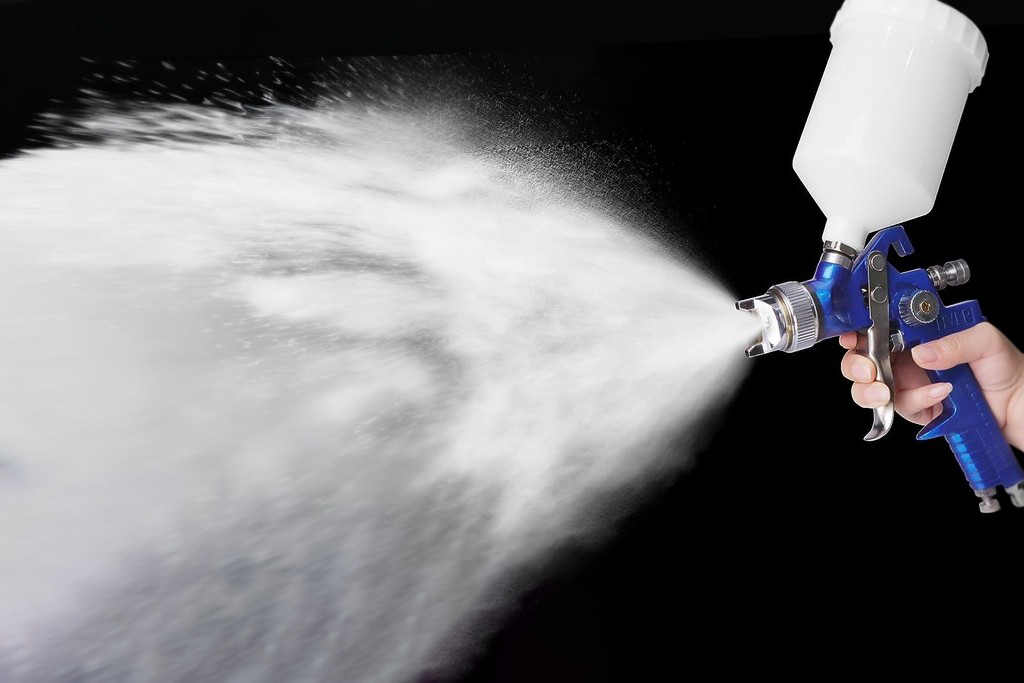AI-generated website posts offer efficiency for SEO but may lack accuracy and context understanding. While AI boosts content volume and keyword targeting, its limitations can lead to inaccuracies
The Science of HVLP Spray Guns
Spray painting, especially when aiming for a high gloss spray paint finish, is a technique as old as modern cars and intricate furniture designs. But like every technology, it has evolved, making way for precision, efficiency, and versatility. One such evolution is the HVLP spray gun. In this article, we’ll delve into its mechanism, explore its compatibility with various materials, and identify the range of surfaces it can gracefully coat.
How does an HVLP spray gun work?
The genius of the HVLP spray gun lies in its name: High Volume, Low Pressure. Unlike traditional methods that rely heavily on pressure to disperse paint, HVLP uses volume. When you pull the trigger of the HVLP gun, paint is released into a stream of air. However, this paint is atomized into minute particles using a large air volume. But when considering materials, an MDF spray primer, too, gets a smooth and even layer, providing the perfect base for subsequent paint applications.
What is the air source for HVLP spray guns? This mechanism can be of two types:
- Compressed Air HVLP: This version taps into an air compressor, which can typically churn out around 25 psi. However, the HVLP gun transforms this into a gentler 10 PSI or even less. This ensures the paint is propelled at a more controlled velocity.
- Turbine HVLP: Instead of relying on an external compressor, this system houses its turbine, which rolls out a whopping air volume at a gentle 6 psi. What does this mean for the user? Savings! No extra cost for an air compressor and no need for inline filters, as the turbine pumps out warm, dry, and clean air.
Now, a bit of math: Turbine HVLP guns boast an impressive over 80% Transfer Efficiency, while their Compressed Air counterparts stand at 65%. This difference isn’t just a number – it signifies tangible paint savings.
What materials are suitable for this spraying method?
After understanding the mechanics and benefits of HVLP spraying, one might wonder: What materials can be expertly applied using this method? The versatility of HVLP spray guns shines not just in their technology, but also in their adaptability to various materials. It is also often used for MDF spraying service
1. Paints and Primers:
Ideal for both latex and oil-based paints, ensuring consistency, especially in furniture projects.
2. Lacquers and Varnishes:
The precise control guarantees a smooth, lustrous finish.
3. Clear Coats:
Perfect for protective top layers on furniture.
4. Stains and Sealers:
Enhance and protect woodwork effortlessly.
5. Enamels:
Handle thicker enamels with ease, promising a glossy outcome.
Which surfaces can HVLP spray guns paint?
While HVLP spray guns excel in their versatility with different liquids, their prowess doesn’t end there. The array of materials they can be used on is equally impressive. From wooden furniture with intricate designs to the smooth flat expanses of MDF boards, these guns excel. When considering edges, a paintable edging tape for MDF provides the perfect finishing touch, ensuring every detail is considered and perfected. Let’s dive deeper into some of these materials:
1. Wood:
Whether it’s a pine bench or an oak table, the fine atomization of HVLP guns ensures that the natural grains of the wood are accentuated and not drowned.
2. MDF:
Preparing your surface is key, especially when cutting MDF board. Given its smooth surface, MDF can sometimes be tricky to paint without leaving streaks or patches. HVLP guns can give MDF boards a flawless finish, making them a go-to for furniture pieces and decorative panels.
3. Metal:
From automotive parts to metal gates, HVLP guns can handle them all.
4. Plastics and PVC:
Whether it’s PVC piping or a plastic toy, the paint adheres seamlessly, giving it a fresh and long-lasting look.
5. Fiberglass:
Used in boats, tubs, and various other products, fiberglass benefits immensely from HVLP spraying.
6. Concrete and Masonry:
While not as common, HVLP guns ensure that the porous surface is evenly coated, giving walls, floors, or decor items a polished look.
The HVLP spray gun is a marvel in the painting realm. Understanding its intricacies can transform your paint projects. Modern HVLP guns come with a variety of advanced features. Beyond fan size and fluid density controls, they offer options for airflow adjustments, allowing for tailored spray experiences. Ensuring the edge banding is appropriately painted when working with materials like MDF can elevate the final look, showcasing the gun’s adaptability and precision.
FAQ
Can I use high gloss spray paint with HVLP guns?
Yes, HVLP guns are excellent for achieving a high gloss spray paint finish. Ensure your paint is adequately thinned and adjust the gun settings for optimal results.
Do I need a primer before using an HVLP gun on MDF?
While it’s not always necessary, using an MDF spray primer can help achieve a smoother and more long-lasting finish. Primers also improve paint adhesion on porous surfaces like MDF.
